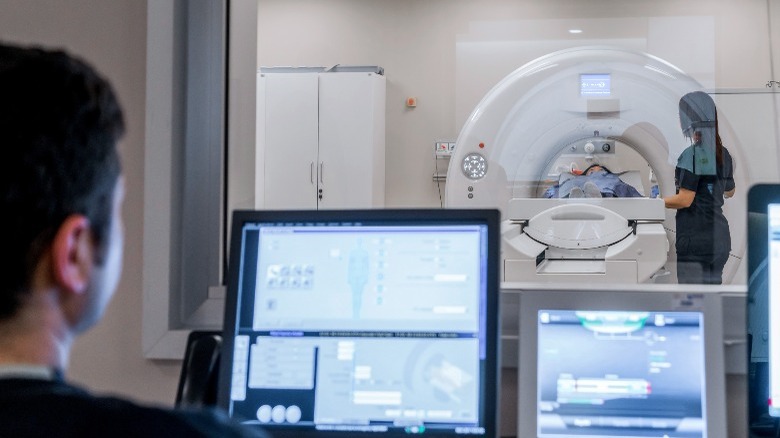The Factors That Put You At Risk For A Blood Clot In Your Arm
When you injure yourself in a way that prompts bleeding, it's normal for your body to naturally react and repair the injury through blood clotting, or coagulation, according to Cleveland Clinic. This reaction is called hemostasis — the word "hemo" means "blood" and "stasis" means "standing still." Normal hemostasis is a vital capability of your body, helping to keep you alive by stopping bleeding in the case of serious injuries.
A collection of processes, hemostasis is made up of several stages that occur simultaneously. These stages are called primary hemostasis, secondary hemostasis, and fibrin clot remodeling. Primary hemostasis, or platelet clogging, is when platelets form a plug at the injury location; secondary hemostasis, or coagulation cascade, stabilizes the plug; and fibrin clot remodeling is when your body replaces the temporary clot with the same tissue that was there prior to the injury.
However, when you have a blood clot form in your body that is not part of this natural process, this can be a very dangerous situation. Life-threatening blood clots, which can affect anyone of any age, impact roughly 900,000 Americans each year. Approximately 100,000 people die from blood clots annually, according to the Centers for Disease Control and Prevention (CDC).
Blood clots are not only costly from a health perspective, but from an economic perspective, costing the U.S. upwards of $10 billion each year. Treatments for blood clots can easily run between $15,000 to $20,000 a person, per CDC.
Blood clots in your arm: causes, treatment and prevention
Sometimes abnormal blood clots form without an injury on the inside of either arteries or veins. Deep vein thrombosis (DVT) is a clot that forms in a major vein. This typically occurs in the legs, but it can also form in arm veins or the pelvis, per the American Society of Hematology (ASH).
Those most at risk for blood clots in their arms tend to be people with medical implants or cancer patients. You are also at increased risk if you are over 40, lead a sedentary lifestyle, or have a history of heart or lung disease. Symptoms that you may have a blood clot in your arm include swelling, red or blue discoloration, and tenderness, per Healthline.
Blood clots in the arm can be dangerous, because they can develop into a pulmonary embolism by traveling through your circulatory system into your lungs. If you think you may have a blood clot in your arm, your doctor can run tests, such as a CT scan or MRI to confirm. Depending on how serious the clot is, treatment may only require limb elevation or a graduated compression arm sleeve to help the blood flow from your arm to your heart. For more serious blood clots, your doctor may prescribe blood thinners or advise removing the clot surgically. You can help prevent blood clots from developing by exercising regularly, maintaining a healthy weight, and avoiding sitting for long periods, per Healthline.


